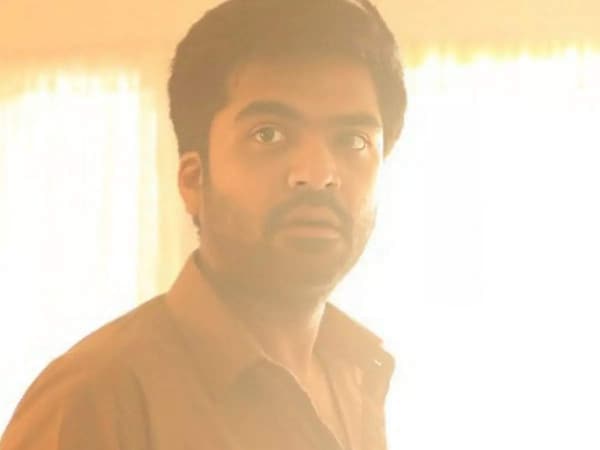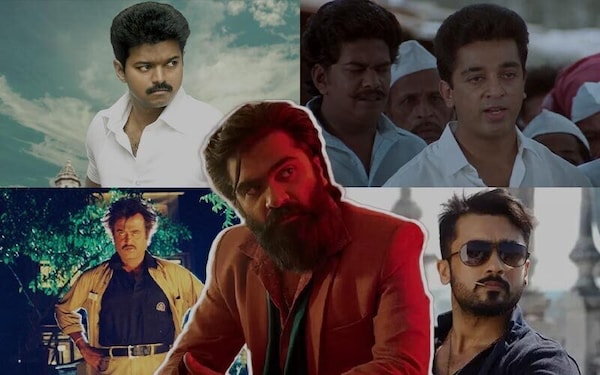Mumbai Through The Eyes Of The Tamil Gangster Film

- Sruthi Ganapathy
Film Companion
Last Updated: 02.17 PM, Sep 17, 2022

Raadika Sarathkumar might have very few lines in Gautham Vasudev Menon’s Vendhu Thanindhathu Kaadu. But she might just have some of the film’s most impassioned ones. “It’s time for you to leave the land of the fire devil,” she fumes with exasperation, pushing her son to leave the scorching Naduvakurichi for a parotta shop in Mumbai’s Chembur. But little does she know that she’s sending her son from one land of fire to another.
At the heart of Menon’s gangster piece is Silambarasan TR’s Muthu, who unwittingly becomes a cog in Mumbai’s murky machine. The film, which charts his meteoric rise to an irreverent don, is set in a milieu that the Tamil gangster film is more than familiar with.
Vendhu Thanindhathu Kaadu is the latest in a long line of films to trace the tumultuous rise of the Tamil-speaking gang member in Mumbai. The Tamil gangster genre is heavily inspired by the real-life Tamil immigrant dons from the underworlds of Bombay in the 60s and 80s such as Haji Mastan. But a seminal figure in this line is Varadharajan Mudaliyar, whose life as the kingpin of Dharavi got a fictionalised take in Mani Ratnam’s Nayakan (1987).

An influential film in Tamil noir, Nayakan is arguably where the genre’s fascination with the city of Bombay started. After making his first kill in a bout of rage and grief, Velu flees Thoothukudi as a young boy to escape his misfortunes. And where does he land up? At Bombay’s Victoria Terminus, which is also where the film’s title card is unveiled – a portent for the city’s value in Velu’s life.

Velu (Kamal Haasan) soon finds a sense of warmth and freedom in the city and its kind strangers, who give him a reason to live. Between smuggling goods at the harbour for the poor and fighting for their land rights in the city, Velu soon climbs his way up from being an orphaned juvie to Velu Naicker — a heroic outlaw, who finds family in the Tamil immigrant community in Dharavi.
He also manages to find love amidst all the grime and violence in the city, a narrative that is strengthened by PC Sreeram’s viewfinder. Velu confesses his love for Nila (Saranya) to the most postcard Bombay moment there can ever be – amidst the flying pigeons at the Gateway of India. The pigeons, with whom the city shares a love-hate relationship with, also find a meaningful metaphor in Nayakan, one that signifies Velu’s devotion to his wife.

Nayakan also depicts the plight of working class Tamil-speaking immigrants in the city with substance. Through montages Thotta Tharani’s extensive recreation of Dharavi, the film establishes its hold on Bombay’s landscapes and land politics.
But despite being in the city most of his life, Velu refuses to learn or speak a word of Hindi, communicating only through his aide who doubles up as a translator (Delhi Ganesh in a delightful role). In the end — ironically enough for a movie set in the city of dreams — it is Velu’s restless ambition to further cinch his place in the city that goes on to become his downfall. His desire to outthrow a rival don to become the king of harbour, creates bad blood, eventually shattering his family.
If Bombay was a city of resurrection for Velu, it is a harsh and grimy reminder of a past he wishes to forget for former don and present-day auto driver Manik Baashha in Rajinikanth’s 1995 film Baasha. For it is the very city where he loses two people he holds dearest to him– his father and his childhood friend.
Even if the film doesn’t give us a detailed, ground-up view of the city, it introduces us to the Bombay of Baashha — one that is steeped in style over substance. So, when his friend is ruthlessly killed near the Bandstand promenade, the Arabian sea is witness not only to the murder of a Muslim man fighting for land rights, but also the birth and wrath of Baashha.
In its own way, Baashha also signifies loyalty, an emotion that is often associated with the residents of Bombay towards their city. “When I came to Bombay as a man with nothing, it was Antony who gave me a livelihood. It is his salt that I grew up eating,” says Vijayakumar (who plays Rajinikanth’s father) in a poignant scene, justifying his allegiance to his crooked boss.

The city is a reminder of pain for yet another mob boss in Tamil cinema, albeit not the best film in the genre – Ajith’s Jana (2004). Like Baashha, Jana (Ajith) is haunted by his rogue past. In the Shaji Kailas movie, he keeps getting flashes of the city, especially that of the Gateway of India—but the monument in this case finds no deeper meaning in the film. Jana is yet another saviour of the masses in the city, but his territory isn’t restricted to Dharavi. “Bombay la Jana oda kaal padatha edamum illa avar kai padaatha rowdyum illa: There is no place in Bombay that Jana’s feet haven’t touched, and no rowdy in Bombay that his hands haven’t thrashed,” a person surmises his past. The fight sequences, too, get an urban updo in the movie, moving away from the nooks of slums to the shopping complexes of Malad.
Even if some plotlines have remained unchanged over the years, the depiction of Mumbai gets with the times. Vijay’s Thalaivaa (2013) takes on the ageing Dharavi don trope, with sprawling shots of the Bandra-Worli sea link (a structure that came to be in 2009), symbolising a new Mumbai in the process. Modern-day Mumbai quirks find delightful appearances in the film’s otherwise banal screenplay. The local trains, in this instance, are not romanticised, but instead used for a superb action sequence, evoking a sense of suffocation.
With Lingusamy’s Anjaan (2014), the streets of Dharavi are put to rest, and the focus is instead on Andheri and its underworld. Suriya plays Raju Bhai, aka the Andheri kingpin or Andheri puli (as Asif Basra frequently reminds us in the film), who roams around with his motley group to clean up the city in swanky Range Rovers and Mercs. But when ego and rival gang fights get in the way, Raju loses his way. “There’s as much darkness in the city as there is brightness,” we are told.
But perhaps the most poignant portrait of modern Mumbai and Dharavi comes in Pa Ranjith’s 2018 Kaala. While Ranjith uses Rajinikanth to spotlight Dharavi’s land rights of the urban poor — a subject that has been the centre of many such gangster films — he mindfully stays away from treating the neighbourhood with saviour complexes. Karikalan is not a white knight, who saves his slums, but a second generation Tamil immigrant, who lets his people fight their own fight. Consider the lyrics to superstar’s intro song – ‘Semma Weightu’ – “Kaiya katti vaaya pothi ninna kaalam pochu. Etti vandhu ninnathellaam vaanathila yethiyachu. Dharavi enga area. Inga kaala saet thaan. Avaru munna vera yaaru.” The focus of the song, which is written by Dharavi-bred Tamil rapper Tony Sebastian– is Dharavi, of which Kaala is a part of, and not the other way around.
In Kaala, Mumbai and its land are not just symbols of power, but also of life, as Karikalan furiously points out when he butts heads with politician Hari Dada (Nana Patekar). As with the films in the genre, everyone wants a piece of Dharavi, and Kaala is no stranger to that as well. But Ranjith’s Dharavi – is depicted not from a place of grime, helplessness and impurity, but from a place of strength and perseverance. Unlike Velu Naicker, Karikalan not only speaks Hindi, but habitually uses the language to convey his community’s might.
In one of the film’s best stunt scenes, Kaala fends off a power-hungry politician with an umbrella in the middle of Mumbai’s torrential rains and the Marine Drive flyover. And in this scene, a wide-angle establishing shot tells us all that we need to know about the film and the city that it’s trying to explore. While Kaala stands on the side of the flyover that is towards Mumbai’s coastline, his rivals stand on the other side, amidst towering highrises.

In this line, Vendhu Thanindhathu Kaadu, which comes 35 years after the godfather of the Mumbai Tamil don movie Nayakan, is also a surprising outlier in the genre. The Mumbai of VTK is never idealised. The very shores of the Dadar Chowpatty that his friends are washed up over after a kill, is where the film chooses to frame Muthu and Paavai’s heart-to-heart about their future in another scene. The crammed matchbox chawls of the city are not cleaned up, but in fact used to take a song innovatively forward.
Even if Muthu finds love, life and riches in the city, he is silently repulsed by the blood in his hands. “My hands, legs and body are stained with the blood I took,” he tells in a scene, bursting to escape the system, and the city. And as the epilogue suggests, he finally does. Only time will tell if that will be the case for the future dons to come.


 Premium
Premium